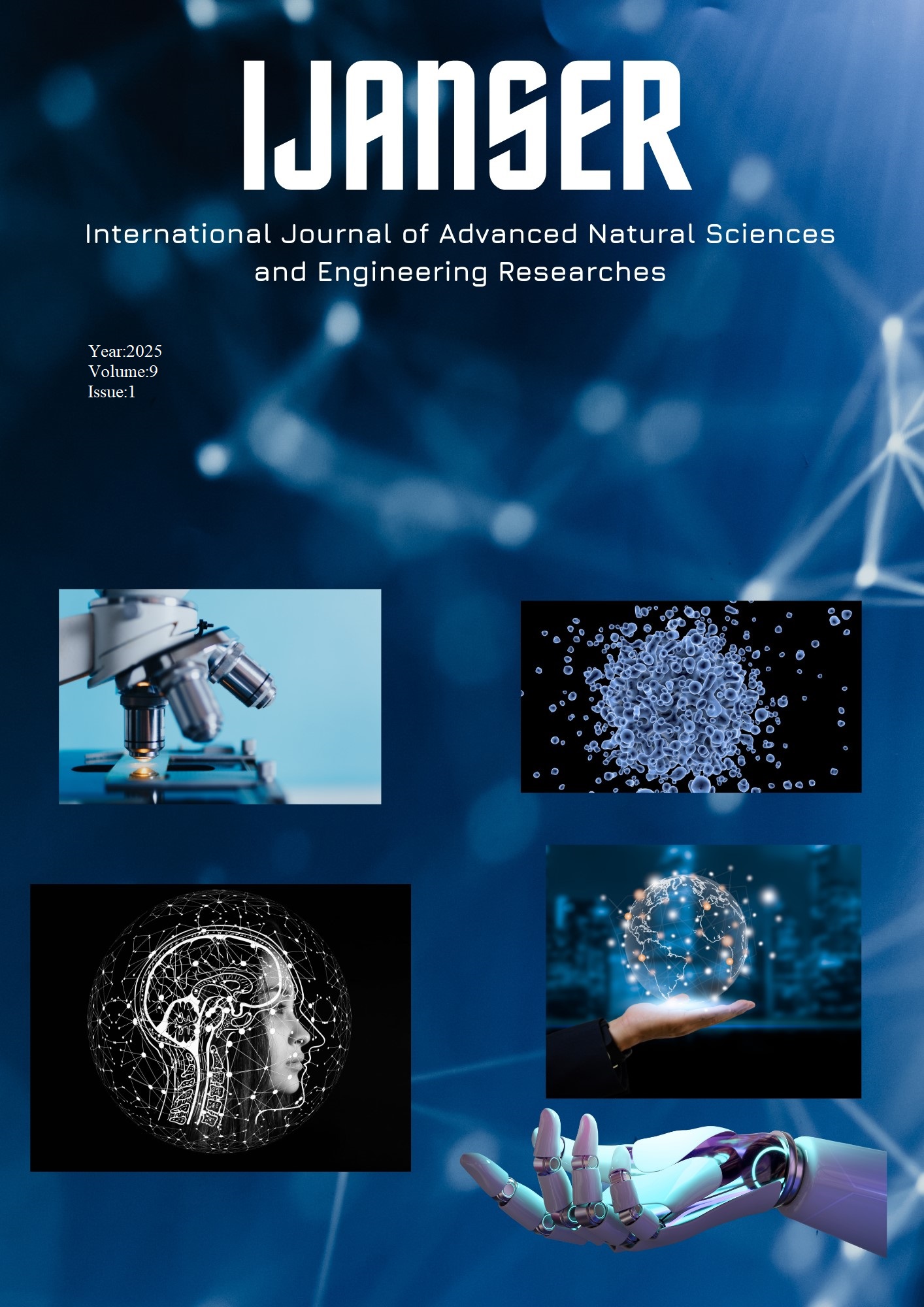Hydrogen Transfer Reaction of Ketones Under Ru-NHC Catalyst
DOI:
https://doi.org/10.5281/zenodo.17117947Keywords:
Transfer Hydrogenation, Ru-NHC, 5,6-Dimethylbenzimidazole-2-Yliden, Ketone, AlcoholAbstract
The reduction of organic compounds is one of the important synthetic processes both in the laboratory and industrially. Transfer hydrogenation, which is practically carried out with metal catalysis, is an important reaction in this respect. Since hydrogen donor molecules are used instead of gaseous hydrogen in the reduction of multiple bonds, it is economical, mild and environmentally friendly. [1] Hydrogen donors such as molecular hydrogen, alcohol, formic acid are catalytically activated by suitable metals or metal complexes. It is known that many Ru, Rh and Ir compounds reduce different substrates in both homogeneous and heterogeneous phases. [2,3] In this study, 5,6-dimethylbenzimidazol-2-ylidene salts, which were synthesized and whose structures were elucidated by spectroscopic methods, were converted into ruthenium-carbene complexes in the reaction medium and their catalytic activation in the transfer hydrogenation reaction of acetophenone derivatives was investigated. When the results were examined, it was seen that this catalyst system was active.
Downloads
References
Murahashi, S.I. (Ed.), Ruthenium in Organic Synthesis, Wiley-VCH Weinheim 2004.
Hashiguchi, S.; Fujii, A.; Takehara, J.; Ikariya, T.; Noyori, R. Journal of American Chemical Society, 117, 7562–7563, 1995. b) Noyorı, R.; Hashıguchı, S. Accounts of Chemical Research, 30, 97-102, 199.
Özdemir, İ.; Yaşar, S.; Çetinkaya, B. Transition Metal Chemistry, 30, 30:831–835, 2005.M. Wegmuller, J. P. von der Weid, P. Oberson, and N. Gisin, “High resolution fiber distributed measurements with coherent OFDR,” in Proc. ECOC’00, 2000, paper 11.3.4, p. 109.
Öfele, K., 1,3-Dimethyl-4-imidazolinyliden-(2)-pentacarbonylchrom ein neuer übergangsmetall-carben-komplex, J Organomet. Chem. 12, 42-44 (1968).
Wanzlick, H., Wchönherr, H. Passivation of Raney Nickel by Nitriles. - Hydrogenation in Acid Solution, Angew.Chem. 7, 141-142 (1968).
E. Ö. Karaca, Z. Bingöl, N. Gürbüz, İ. Özdemir, İ. Gülçin, Vinyl functionalized 5,6-dimethylbenzimidazolium salts: Synthesis and biological activities, J Biochem Mol Toxicol. (2023);37:e23255.
(a) M. Poyatos, J. A. Mata, E. Falomir, R. H. Crabtree and E. Peris, Organometallics, 2003, 22, 1110–1114; (b) R. Corbean, M. Sanau and E. Peris, Organometallics, 2007, 26, 3492–3498; (c) D. Gnanamgari, A. Moores, E. Rajaseelan and R. H. Crabtree, Organometallics, 2007, 26, 1226–1230; (d) R. Castarlenas, M. A. Esteruelas and E. Onate, Organometallics, 2008, 27, 3240–3247; (e) D. Gnanamgari, E. L. O. Sauer, N. D. Schley, C. Butler, C. D. Incarvito and R. H. Crabtree, Organometallics, 2009, 28, 321–325.
(a) P. Hauwert, G. Maestri, J. W. Sprengers, M. Catellani and C. J. Elsevier, Angew. Chem. Int. Ed., 2008, 47, 3223–3226; (b) S. Gladiali and E. Alberico, Chem. Soc. Rev., 2006, 35, 226–236; (c) G. Zassinovich, G. Mestroni and S. Gladiali, Chem. Rev, 1992, 51, 1051–1069; (d) R. Noyori and S. Hashiguchi, Acc. Chem. Res., 1997, 30, 97–102; (e) H. U. Blaser, C. Malan, B. Pugin, F. Spindler and M. Studer, Adv. Synth. Catal, 2003, 345, 103–151.
(a) S. T. Liddle, I. S. Edworthy and P. L. Arnold, Chem. Soc. Rev, 2007, 36, 1732–1745; (b) O. K ¨uhl, Chem. Soc. Rev, 2007, 36, 592–608; (c) A. T. Normand and K. J. Cavell, Eur. J. Inorg. Chem, 2008, 2781–2800; (d) P. L. Chiu, C. Y. Chen, C.-C. Lee, M.-H. Hsieh, C.- H. Chuang and H. M. Lee, Inorg. Chem., 2006, 45, 2520–2530; (e) R. Corberan, E. Mas-Marza and E. Peris, Eur. J. Inorg. Chem, 2009, 1700–1716.
A. C. Hillier, H. M. Lee, E. D. Stevens and S. P. Nolan, Organometallics, 2001, 20, 4246–4252.
(a) E. Mas-Marza, M. Poyatos, M. Sanau and E. Peris, Organometallics, 2004, 23, 323–325; (b) M. Poyatos, E. Mas-Marza’, J. A. Mata, M. Sanau and E. Peris, Eur. J. Inorg. Chem, 2003, 1215–1221; (c) H. T ¨urkmen, T. Pape, F. E. Hahn and B. C¸ etinkaya, Organometallics, 2008, 27, 571–575.
(a) F. E. Hahn, C. Holtgrewe, T. Pape, M. Martin, E. Sola and L. A. Oro, Organometallics, 2005, 24, 2203–2209; (b) J. R. Miecznikowski and R. H. Crabtree, Organometallics, 2004, 23, 629–631; (c) M. Albrecht, J. R. Miecznikowski, A. Samuel, J. W. Faller and R. H. Crabtree, Organometallics, 2002, 21, 3596–3604.
(a) S. Burling, M. K. Whittlesey and J. M. J. Williams, Adv. Synth. Catal, 2005, 347, 591–594; (b) P. L. Chiu and H. M. Lee, Organometallics, 2005, 24, 1692–1702; (c) M. G. Edwards, R. F. R. Jazzar, B. M. Paine, D. J. Shermer, M. K. Whittlesey, J. M. J. Williams and D. D. Edney, Chem. Commun, 2004, 90–91.
S. Kuhl, R. Schneider and Y. Fort, Organometallics, 2003, 22, 4184–4186.
N. Gürbüz, E.Ö. Özcan, İ. Özdemir, B. Çetinkaya, O. Şahin, O. Büyükgüngör, “Preparation of a series of Ru(ii) complexes with N-heterocyclic carbeneligands for the catalytic transfer hydrogenation of aromatic ketones”, Dalton Trans., 2012,41, 2330-2339.





